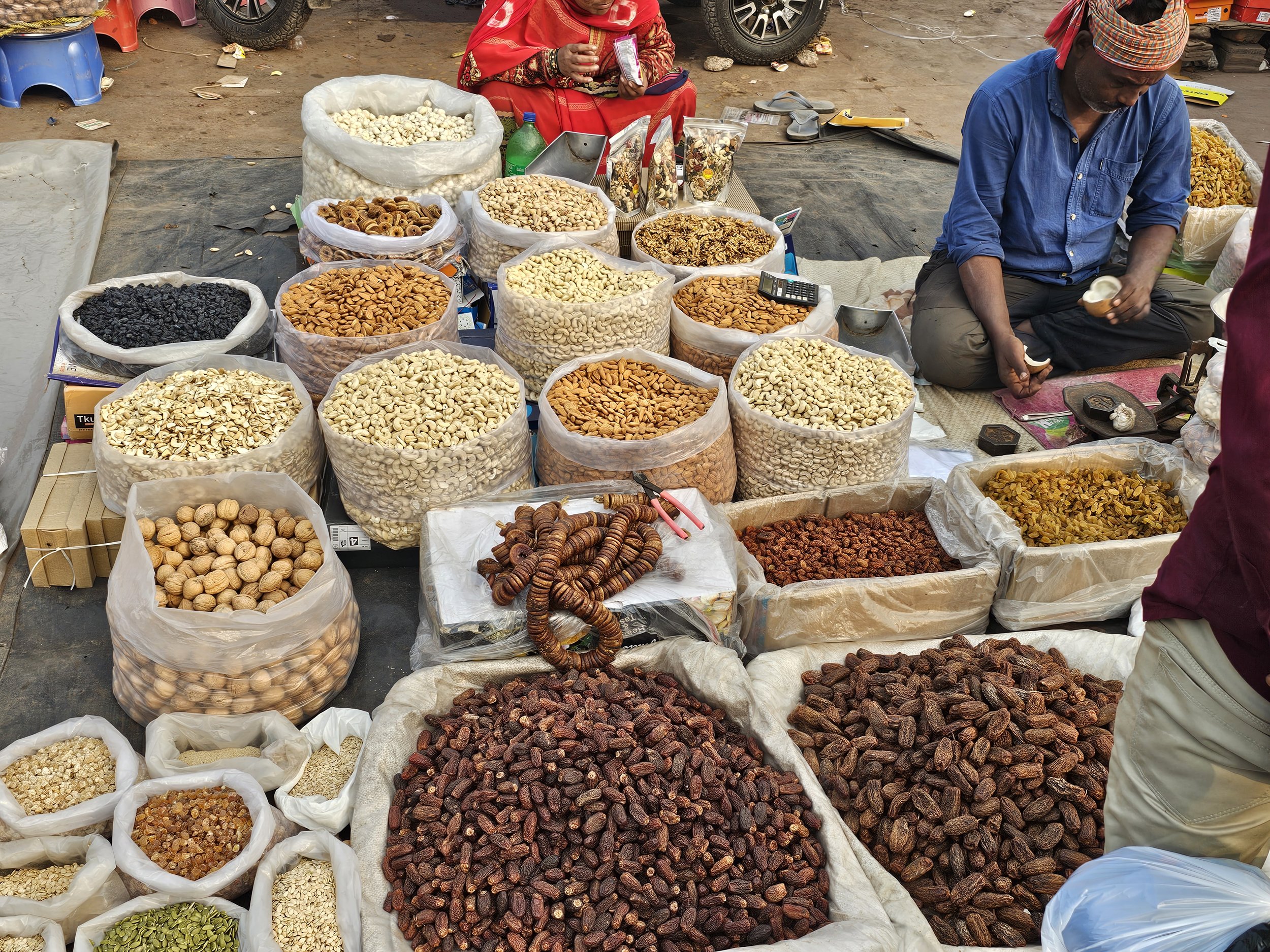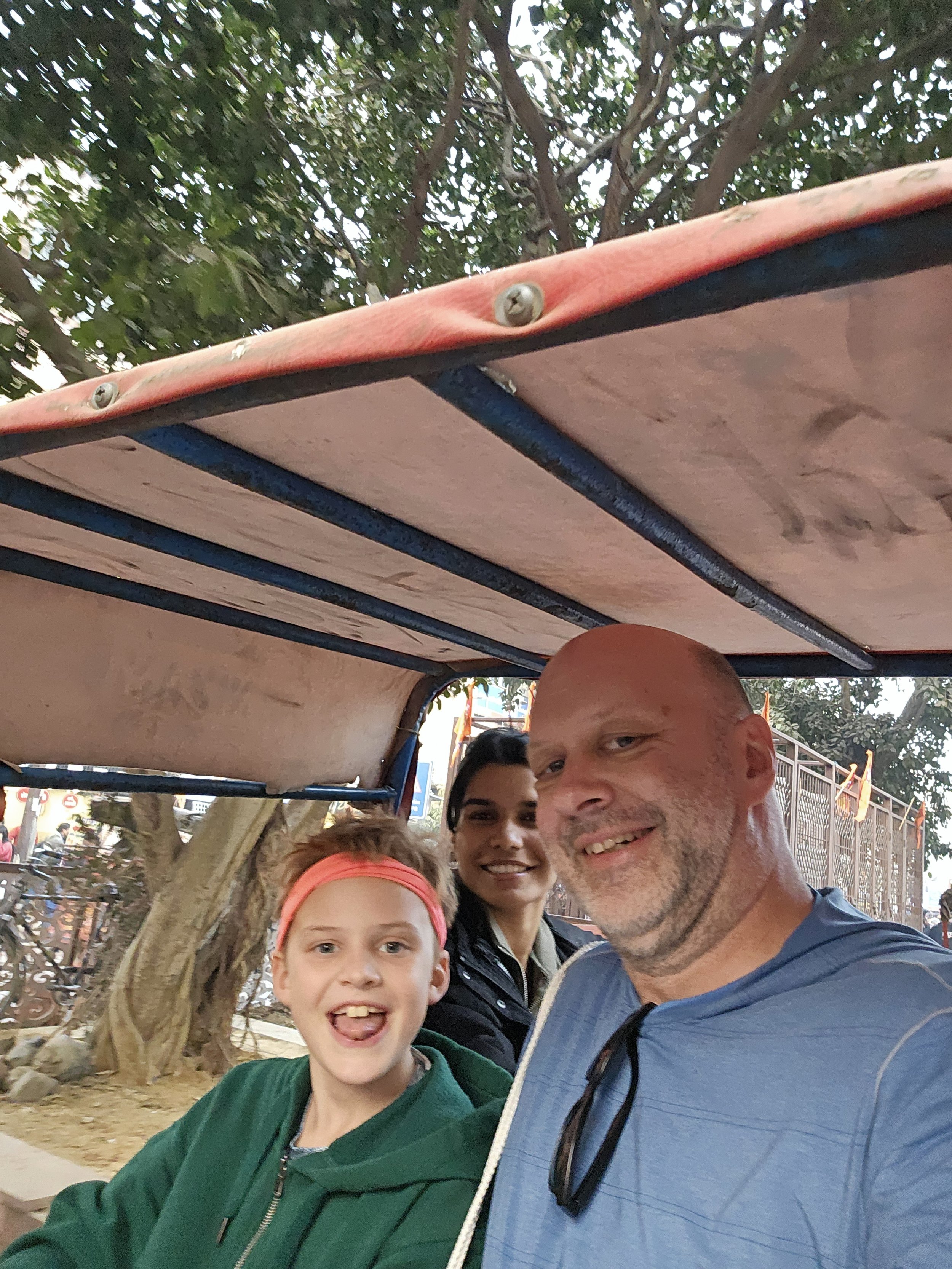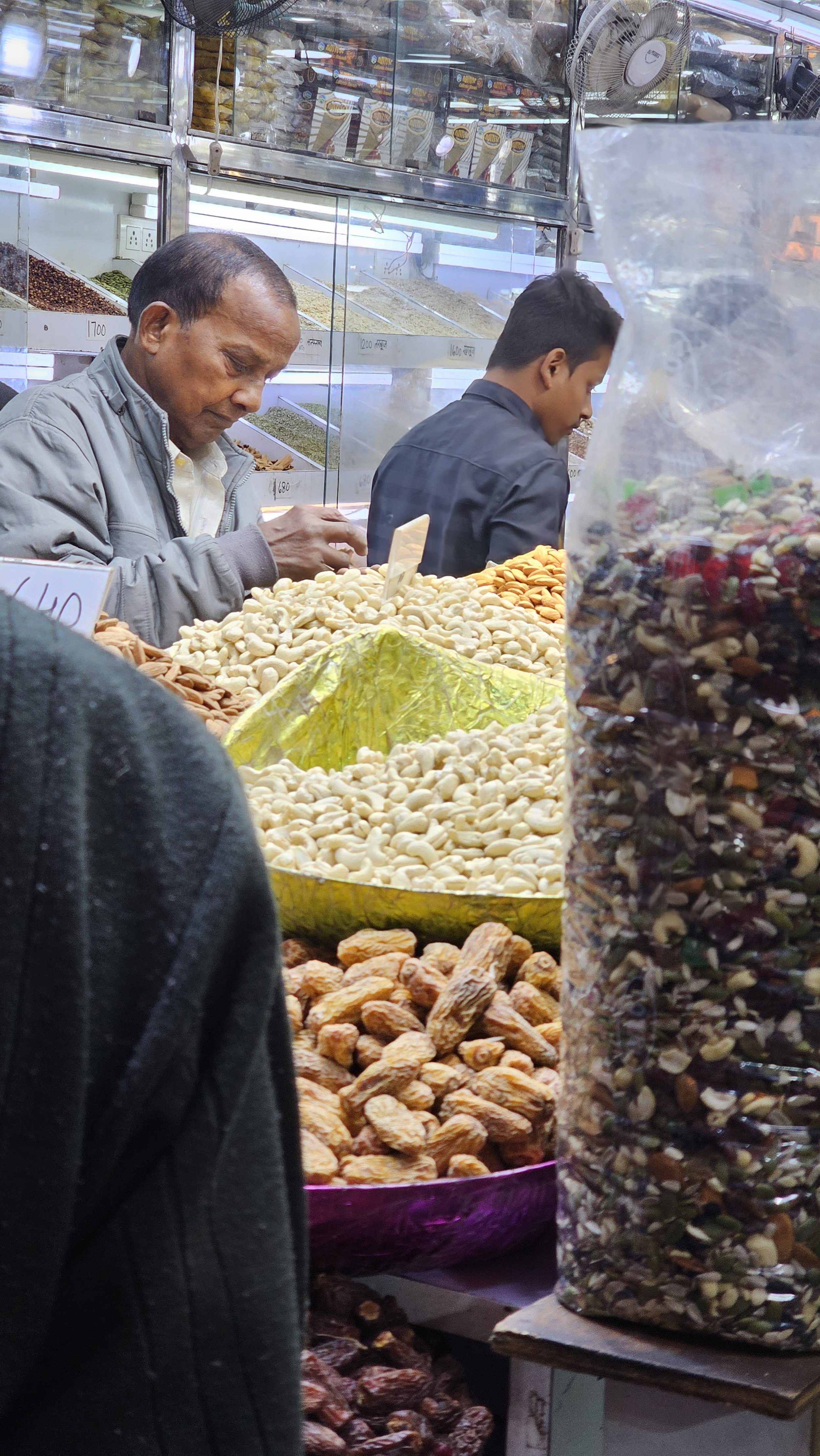Kajal and Purav
Delhi, India
Back from the Old Delhi tour and food walk just now and we’re reeling from our experience. Salaam Baalak Trust is an organization started in 1988 that supports kids living on the street in Mumbai and Delhi. Two young adults, Kajal and Purav, were our tour guides today. Kajal’s parents contracted HIV when she was young and they sent her to live with the organization at age 8. Purav lived on the streets of Delhi starting at age 6. He told us he doesn’t have any family, that the people in the organization are like family. Six years old he was. He should have been in kindergarten.
Salaam Balaak Trust started in Mumbai supporting just 25 street kids. Now they serve 11,000 children each year in all kinds of ways. They offer basic help like food and a place to sleep. Sometimes the children need to be gradually introduced to the idea of a life beyond begging; sometimes it’s all they know. Day shelters are open for kids to come and be indoors, get fed, shower. Staff build trust with the kiddos, volunteers and older children show them another kind of life is possible.
Kajal said anything the kids are interested in the organization will help them learn - cooking, fencing, swimming, anything. The movie Salaam Bombay! was filmed and produced to fund the Salaam Baalak Trust. After that, many of the kids became interested in acting and the movies. Young adults have the opportunity to lead tours of Old Delhi, the world they know so well. They get paid for their time and can practice their English.
Twice we rode in bicycle rickshaws, our first times ever. I saw so many chandelier earrings and fancy, golden stationary packs I wanted to buy. We saw dried lotus seeds for sale at the spice market and dried mango that looked like slabs of leather. We coughed through the spice market with fumes from hundreds of sacks of chilies, turmeric, coriander, and ginger stuck in our throats. A Muslim street vendor offered plaques and framed art with Urdu prayers and sayings; I thought Urdu was an dead language, but it’s not. To the constant requests for money, we learned to say, “no, thank you” in Hindi: “nahi, shukria.” To one small group, Kajal politely suggested they find work rather than beg on the street.
Foods we ate today include:
Masala tea and sharbat-e-mohabbat (“love drink”), a sweet milk flavored with watermelon, over ice
Butter chicken and chicken biryani from Aslam Chicken, much different than any butter chicken we’ve had. It was bathed in ghee after being spiced and roasted. Glorious. Two kinds of roti came with - one thick and an almost transparent “tissue” or rumali roti. Kajal and I like the thin, Purav, Josh, and the boys prefer the thicker.
Shahi tukda, a dessert dating back to Mughal times. It’s a sweet, milky, bread pudding in two layers, the bottom warm and the top was chilled. Ghee, milk, cardamom, nuts. Gorgeous.
Chicken and mutton kebabs from Quereshi. Meat is pulverized, seasoned, and wrapped by hand over a thick, metal roasting stick, then placed over a flame. When removed, it leaves a deliciously seasoned chicken roll served with red onion and mint sauce. Leo said the flavor was familiar; he liked it.
Kulfi. Indian ice cream served on a long stick with a point at the end, like a skewered, mini Lincoln Memorial.
Parantha with accompaniments. Dozens of flavors of parantha to choose from, we opted for aloo (potato) and paneer (cheese). It was served on a large, silver, portioned platter with sabji, pumpkin chutney, pickled radishes, mint sauce, spiced potato, and a sweet chili sauce with a slice of banana. Leo loved it. Josh took a bite of the green chili on the plate and itfired up his mouth in a hurry. Purav rushed to get him a bottle of water and a small dish of a sweet, creamy dish like a simple shahi tukda we had earlier.
Assorted sweets, including tadoo besam, a sweet, crunchy ball something like the consistency of pulverized breakfast cereal. It’s actually made of gram flour, or chickpea/pulse flour plus sugar and ghee. We chose 3 other sweets from the case, including one kind of Indian fudge called peda, but I liked the tadoo besam best.
Kajal also told us about the massive gathering of goats to the slaughter on Eid, the middle-of-the-night Thief Market (where stolen goods are re-sold), how giving generously is core to the Sikh religion, and that you can ask restaurants to pack your uneaten food to then offer those begging on the street.
Many things were left unphotographed: rows of sliced off goat heads for sale at the market, people wrapped in filthy blankets, the faces of those who stared at us. Kajal reminded us that an extra long gaze comes from curiosity and there’s nothing to be afraid of. We are also curious about them. Turbans, saris, flip-flops, bangles, beards, black eyeliner, copper-colored teeth, crisp language, red painted foreheads. Our imaginations stretched like snare drums to understand what life might be like as an Indian living in old Delhi.
These two, dear, brand new grown-ups were just little pumpkins when they lived on the wild streets of Delhi. Today they were so collected, attentive, confident, and warm. I felt utterly safe and protected, easily deferring to them for direction and expertise.
Kajal and Purav took us by the hand and brought us as guests deep into a Delhi we could never have experienced on our own. They trusted us with their culture, and we were allowed in with an unspoken, “We’re with them.”























































